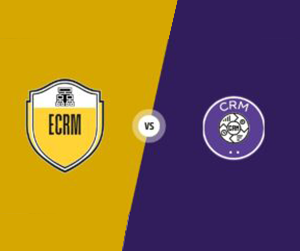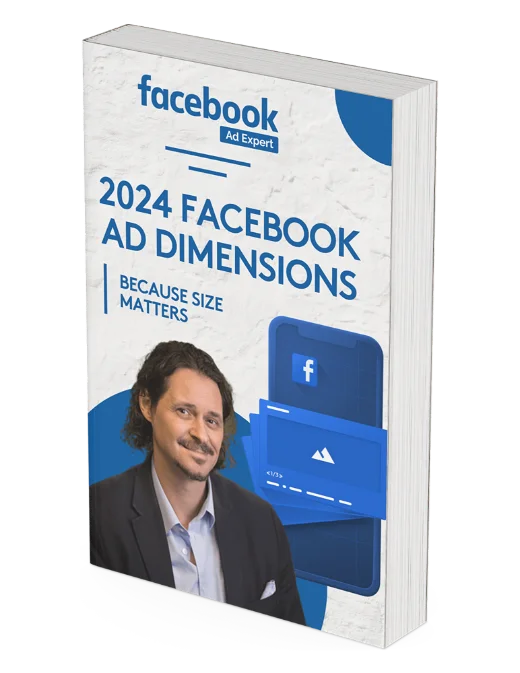Good fintech content marketing is like a strong wind pushing companies forward, making their marketing exciting and getting people interested. But, figuring out how to do it well is hard for fintech companies. They struggle to make content that people notice and that helps them make sales.
If you’re one of those companies, you might feel disappointed because the content you’ve worked on hasn’t really caught the attention of your audience. But don’t worry, many companies face this challenge in the competitive world of fintech.
However, for the few who figure it out, the rewards are big. High-quality, research-based content can boost a brand’s ranking, as found in a 2023 Semrush survey.

But it’s not just about rankings, even though that’s a great way to get more people to visit your website. We’re also talking about content that turns readers into customers.
So, what does excellent content marketing for fintechs look like, and how can it help your business grow?
Let’s explore.
Struggling to get new customers through your website? Schedule a consultation call with Facebook Ad Expert to discover how our SEO-focused content marketing strategy can bring in more organic traffic, leading to increased sales.
What is fintech content marketing, and why is it so important?
Every fintech brand aims to attract, engage, and turn their desired audience into customers. High-quality content marketing is the key to achieving this.
Fintech content should:
- Focus on keywords that directly address your customer’s problems, especially those related to your unique technology and how to use it.
- Educate your target audience with current, informative content supported by expert quotes and industry research.
- Utilise specific product information to address concerns about compliance and security, reassuring your readers.
- Cater to your audience’s position in the buyer journey and guide them towards making a purchase.
A fintech content marketing strategy ties all these aspects together, ensuring that content creation and distribution work seamlessly. Each piece of content plays a role in generating more potential customers.
6 excellent fintech content marketing examples (and why they work)
Creating effective fintech copy can take various forms, but the common thread is delivering content that is useful and relevant to what the customer needs.
When executed successfully, this approach can alleviate financial security concerns, foster trust in your brand, and guide customers towards making a purchasing decision.
Here are some successful examples.
1. Chime: Use helpful infographics and optimise them for Google Search
Fintech brands often lose customers due to complex technical content that distances and discourages them from the product. In the fintech industry, where security concerns are prevalent, the longer it takes for readers to grasp product-related concepts, the less likely they are to become customers.
Infographics offer a solution by presenting valuable information and data in an easily understandable format. They use charts and images along with concise and engaging content, enabling readers to comprehend the information quickly. Additionally, optimising these visuals with keyword-focused alt-image tags helps attract the desired target audience.
Chime, a fintech app, effectively employs this marketing tactic. Their ‘Community’ section features visually appealing articles aimed at educating and reassuring readers. The use of the term ‘community’ creates a sense of inclusion and security for first-time users.
Inside this section, you’ll find content ranging from explainers on how Chime generates revenue to visual guides on applying for a student credit card. The latter demonstrates the brand’s ability to simplify a potentially stressful process into an easily understandable guide.
For a glimpse, here’s an example of one of Chime’s infographics.

Many fintech brands tend to complicate their messages with lengthy paragraphs, but Chime avoids this mistake by presenting information clearly and concisely.
Notice how they strategically include an image title, likely one of their targeted keywords. This is crucial, especially when dealing with students, a significant part of their customer base who may face challenges when applying for a credit card.
Infographics serve as a powerful tool for passive backlink building. Creating a valuable resource can position your website as an authority on the subject, attracting links from other sites.
At Facebook Ad Expert, we enhance this strategy by ensuring that your infographic’s alt-image tags align with Google Images searches, leveraging the world’s second-largest search engine to generate organic links.
If you possess large proprietary datasets, such as fintech market trends, that you’re willing to share publicly, infographics can effectively communicate this information. When optimised correctly, they contribute to boosting thought leadership within your market.
2. Wise: Write comparison posts that rank for high-intent keywords
Wise’s ascent to the top in the digital payment sector can be attributed to their profound understanding of their target audience. Recognising that fintech buyers extensively research before choosing a new payment platform, Wise took the initiative to assist them in this process.
In a strategic move, Wise authored a blog post comparing the “top 10 payment gateways,” intentionally excluding themselves from the list. This might seem risky, but it’s a clever strategy. By highlighting both the strengths and weaknesses of their competitors, Wise positioned themselves as a solution provider.
They not only showcased their rivals’ attributes but also pinpointed how Wise could address any shortcomings mentioned. Importantly, Wise strategically inserted calls-to-action (CTAs) to their own financial service throughout the article.
For instance, when mentioning Wise Business connecting to Stripe, they seamlessly included a CTA immediately after.
Wise’s astute use of CTAs has played a crucial role in their successful marketing approach.

The article effectively engaged readers actively seeking new payment gateways from competitors. If you’re in the market for a new payment gateway, you’re likely to search for terms like “top payment gateways” on Google, and Wise’s article will likely appear.
Additionally, the article can rank for direct comparison keywords, like ‘Wise vs XYZ,’ establishing Wise as an authority on the topic. This visibility makes readers more inclined to explore Wise’s products.
Importantly, the article likely drew in customers searching for information about competitors, as it consistently mentions and compares them throughout the piece.
This dual strategy of targeting those actively seeking alternatives and those researching competitors enhances the article’s effectiveness in attracting a diverse audience.
Wise appearing on the “Top Payment Gateways” front page
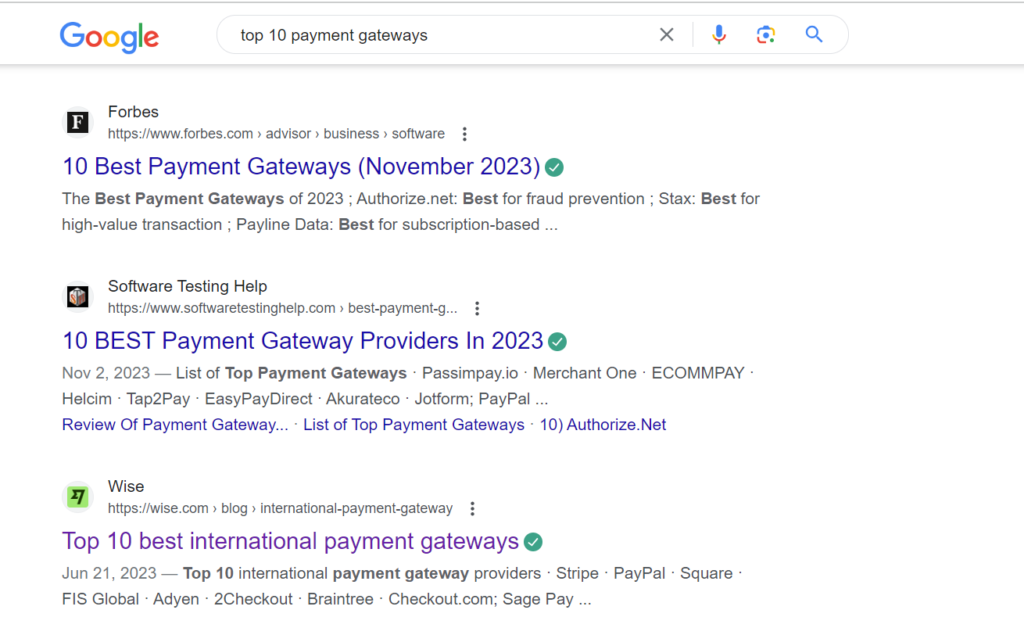
The combination of thought leadership and strategic keyword research is a widely used tactic in contemporary fintech content marketing to attract organic leads effectively. It proves that you don’t necessarily have to be overt in pushing people to purchase your product.
By providing valuable insights and positioning your brand as an authority in the industry, you naturally draw in potential customers who are actively seeking information, creating a more organic and genuine connection.
3. OpenSea: Show your audience exactly how to use your product
Bottom-of-the-funnel (BOFU) articles are the prized assets in fintech content marketing. Tailored for buyers actively seeking to make a purchase, these articles boast a significantly higher conversion rate when executed effectively.
The primary objective is to convince the reader that your product is the best choice by addressing any doubts they may have. Tutorials and comprehensive product guides emerge as the most effective tools for achieving this goal.
These resources demonstrate precisely how to use the product, highlighting aspects like convenience, time savings, and cost-effectiveness. Visual elements play a crucial role in guiding the reader through this process.
OpenSea, an NFT minting platform, excels in integrating how-to guides seamlessly into broader content. Their ‘Learn’ section covers topics ranging from buying, selling, creating, to minting an NFT. Each article not only explains the concept but also provides practical steps for users to take action using OpenSea.
Additionally, OpenSea prioritises user safety within the NFT community with a dedicated section, including short videos to reassure users. This comprehensive approach contributes to OpenSea’s effectiveness in guiding users through the NFT minting process, as exemplified in their tutorial.

Source: OpenSea
The tutorials from OpenSea are dynamic, engaging, and educational, incorporating a mix of sales-focused language and informative content to create an environment where the viewer feels like a student rather than just a customer.
However, the advantages for OpenSea extend beyond providing valuable information to their audience. Through these comprehensive tutorials and product guides, OpenSea not only addresses the concerns of their target audience but also positions themselves as leaders in the industry.
By investing time in building this library of resources, OpenSea is not just offering immediate assistance but is also creating a robust tool that fosters long-term customer relationships and significantly contributes to driving conversions.
4. Betterment: Hire ‘Finfluencers’ to attract young crowds
Influencer marketing is a potent method to engage your target audience, especially the late millennial and “Gen Z” demographics, who will shape your customer base for years to come.
According to HubSpot research, it’s identified as the most impactful source of B2C marketing Return on Investment (ROI), surpassing short-form videos and SEO.
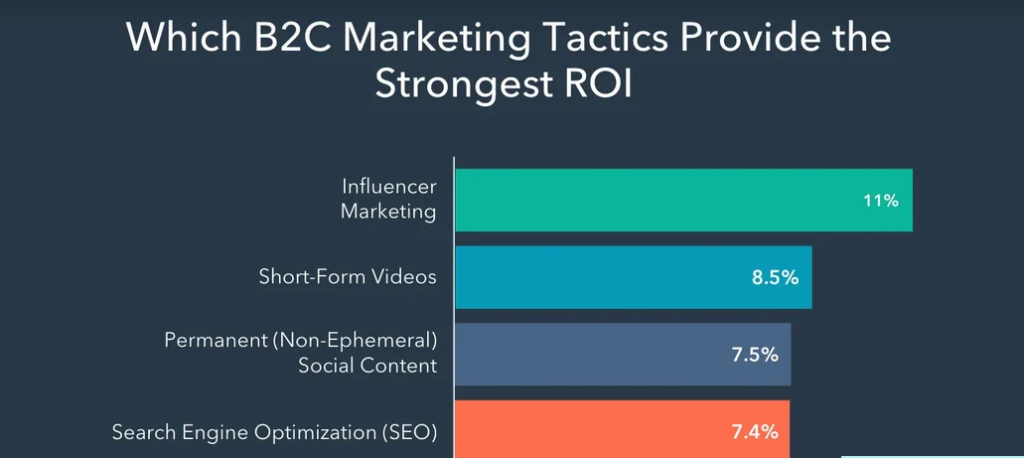
Source: HubSpot
In the fintech realm, a heightened emphasis on security has given rise to ‘Finfluencers’ who provide guidance on using products safely. Often utilising platforms like TikTok, these influencers deliver concise information through snappy video clips for the target audience to consume on their feed.
Taking a unique approach, finance app Betterment collaborated with finfluencer Austin Hankwitz, who shared his ‘millionaire’ retirement plan created using Betterment software with his 500,000 followers.
The outcome was remarkable – Betterment saw 10,000 new registrations in a single day, showcasing how viewers found it easy to replicate Austin’s approach and set up their own digital plans.
Arielle Sobel, then Director of Communications at Betterment, highlighted the effectiveness of Finfluencers, stating, “Finfluencers distill very complex financial ideas and make it easy and digestible for their followers.” This approach is something that any fintech brand can consider incorporating into their digital marketing efforts.
5. Klarna: Build a branded content library
Klarna, a prominent buy-now-pay-later (BNPL) service, is not only known for its financial offerings but also for its blog section, ‘The Extra O.’ In November 2023 alone, Klarna published 11 articles, covering topics ranging from tips for avoiding online scams (TOFU) to a guide on using the brand’s tracking service (BOFU).
‘The Extra O’ stands as an exemplary outcome of constructing a content marketing funnel. Over time, Klarna’s marketing team has generated various content types tailored to each stage of the buyer journey for their key topics, addressing unaware prospects to informed and confident customers. The goal is to attract organic traffic at each awareness stage, using relevant keywords, and guide them towards conversion.
While building a content library like this requires time, the payoff is substantial. Beyond promoting the product, it creates the “Wikipedia effect” where readers click on backlinks within articles, leading them to more of Klarna’s content, thereby keeping them engaged with the brand for longer. The more time spent on their pages, the higher the likelihood of conversion.
As emphasised by author and keynote speaker Andrew Davis: “Content builds relationships. Relationships are built on trust. Trust drives revenue.”
6. Sarwa: Use expert interviews to build trust in your product
Establishing trust is crucial in the fintech industry, where consumer security concerns are paramount. Interviewing subject matter experts is a powerful strategy to reassure customers about the reliability of your product, especially in the fintech market where buyers seek high-quality, factual content on complex topics to better understand the product and alleviate their concerns.
Moreover, search engines like Google tend to rank such useful and well-researched content highly. When coupled with top-notch journalism and SEO practices, it becomes a potent force in shaping a brand into a thought leader and a trusted online resource.
When Sarwa, a UAE-based investment platform, sought assistance from Facebook Ad Expert to position itself as a brand authority, the team observed a lack of expert input in their content. To address this, Mint Position gathered insights from industry-renowned subject experts to answer the concerns of Sarwa’s Middle East target market.
Identifying an unaddressed search topic—whether cryptocurrency was considered halal according to the Quran—Facebook Ad Expert conducted interviews with experts, including Dr. Humayon Dar, Director General of the Cambridge Institute of Islamic Finance, to provide authoritative insights for Sarwa’s audience.
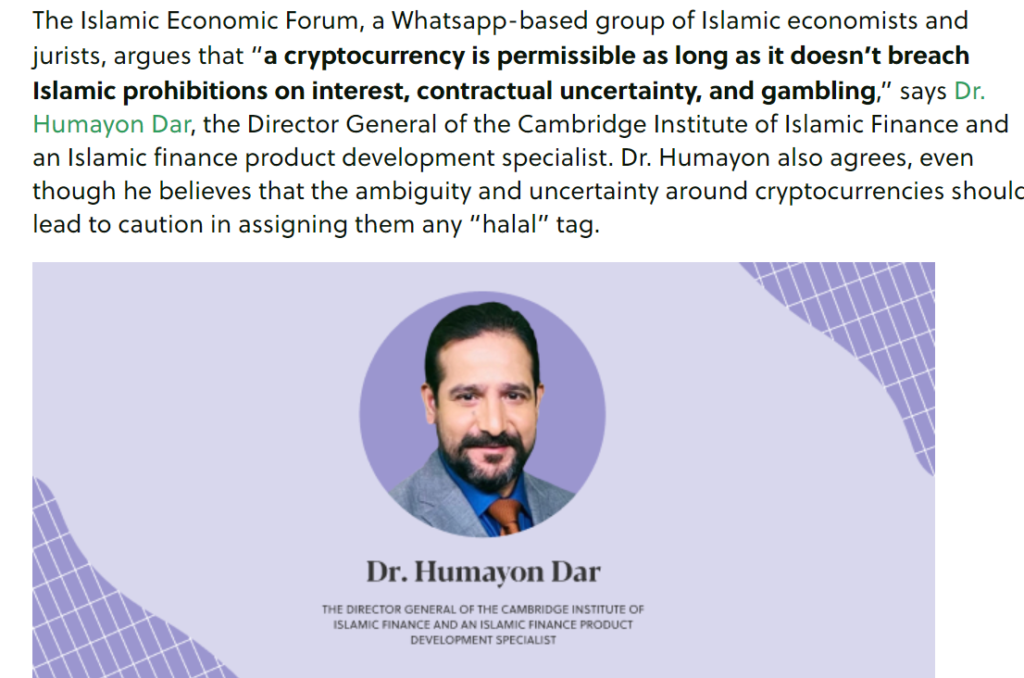
The insights provided by our experts offered our target audience something unique that our competitors couldn’t: well-informed answers to crucial fintech-related concerns.
As our clicks and visibility increased, we began appearing in “people also ask” questions for related search queries not only in the Middle East but globally. This demonstrated that Google recognised us as a trusted resource, leading to improved rankings for searches worldwide.
In the subsequent months, the article garnered a search volume of 25,000 organic visits per month. Sarwa’s website has solidified its position as a major authority on these topics in the region and beyond, showcasing the enduring impact of leveraging expert insights and providing valuable content.
How Facebook Ad Expert brings in customers with fintech content marketing
Analysing successful fintech content marketing examples is a valuable beginning, but when delving into creating your own content, you might wonder, “How do you write fintech content that converts?” Facebook Ad Expert has the solution.
Our content writers undergo training to craft content with a primary focus on customer acquisition, following a strategic approach to achieve that goal. Here’s an insight into our process.
1. Build content around customer-centric keyword research
The most effective way to connect with your target customers is to empathise with them. Understand the problems they want to solve and the specific terms they use when searching.
At Facebook Ad Expert, we take this approach by creating and analysing detailed buyer personas. These personas help us identify over 50 keyword terms that closely align with the search intent of our target audience.
Once we filter out the more challenging terms to rank for, we focus on selecting keywords that fall into a “golden zone” characterised by high buyer intent, low ranking difficulty, and substantial search volume. This strategy, known as “Easy Wins SEO,” is particularly beneficial for startups aiming to rapidly generate relevant traffic.
Our strategy revolves around these carefully selected terms, and we leverage our empathetic understanding of your customers to create content that resonates with them.
Whether it’s crafting expert insights for a B2B audience or developing engaging how-to guides for the B2C crowd, our content is tailored to address the specific interests and needs of your target audience.
2. Follow the funnel
The subsequent step involves creating a content funnel, visually outlining how we transform your fintech content strategy into a converting library. This journey guides the buyer from unawareness to conversion. The previously mentioned “Wikipedia effect” plays a crucial role in keeping visitors on your pages, building internal links for improved rankings.
At the top of the funnel (TOFU), we feature engaging content aimed at potential customers who may not be aware of their problem but are intrigued by interesting topics related to your brand.
Moving to the middle of the funnel (MOFU), we nurture these prospects by offering valuable information, guiding them on finding solutions to their pain points. In the fintech industry, addressing poor user experiences and security concerns is particularly critical at this stage.
The bottom of the funnel (BOFU) holds the utmost importance, and we allocate significant time to this section. It focuses on conversions, providing decision-making content to convince buyers that your brand is the perfect choice for their needs.
3. Focus on BOFU via product-focused content
Bottom of the Funnel (BOFU) is the magic zone.
At this stage, your customer is fully aware of their problem, your company, and they need a solution fast. Our role is to provide exactly what they’re looking for.
BOFU content boasts a significantly higher conversion rate compared to Top of the Funnel (TOFU) material, as customers are ready to make a purchase; they just need that extra push.
This is where Pain Point SEO becomes valuable. Addressing customers directly in need, it guides them from education to specific help, culminating in a tailored fintech solution.
Uniqueness is pivotal at this stage; the content must offer something new, whether it’s fresh insights into your service or highlighting unique features of your product.
An excellent example is our article for the payment API platform Reloadly. Here, we focus on key customer pain points:
- How can I integrate a gift card service into my business?
- How long will this take me?
- Is it easy to do?
Addressing all three pain points in our headline, the article delves into how Reloadly’s API streamlines this integration, providing a step-by-step guide. The tutorial, seamlessly related to the product, not only converted pain points into compelling content but also earned a prime position as an indexed page below the product page on Google.
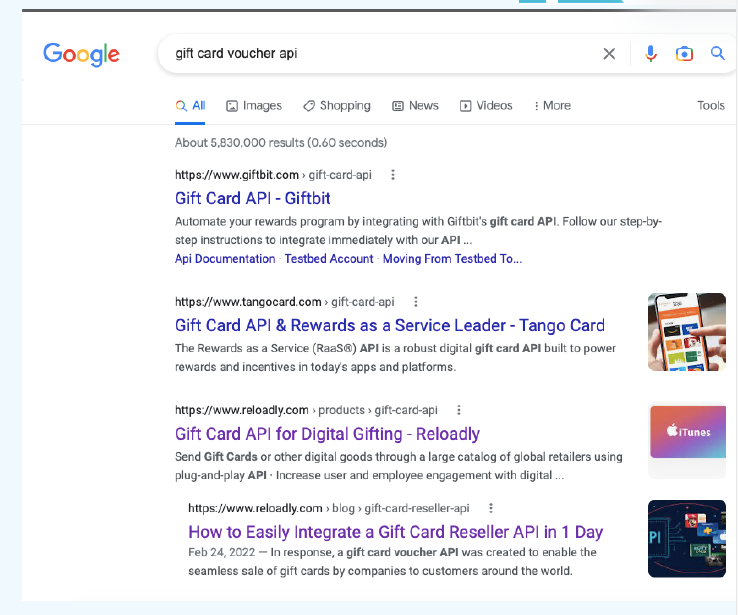
These are excellent examples of our Bottom of the Funnel (BOFU) content crafted for fintechs:
- White Label Prepaid Debit Card: Launch Your Custom Payment Card Within Hours. This content addresses the specific need of launching a custom payment card quickly and efficiently. It speaks directly to customers at the decision-making stage, providing a solution that is not only tailored but emphasises speed and customisation.
- Smart Office Payroll: Pay Salaries With Flexible Solutions That Cut Costs. This content targets customers who are ready to make a decision about payroll solutions. By highlighting flexibility and cost-cutting benefits, it addresses key concerns at the bottom of the funnel and aims to convince them that the featured solution is the ideal choice for their needs.
In both examples, the content is designed to convert potential customers who are well-aware of their problem and are actively seeking a solution. The titles are specific and directly speak to the pain points and needs of the audience at the decision-making stage.
4. Use internal and external expertise to build brand awareness and authority
The introduction of ChatGPT didn’t unsettle us at Facebook Ad Expert; instead, we embraced it and swiftly explored ways to find a harmonious balance between AI and marketing copy.
While recognising the capabilities of chatbots, we understand that content marketers need to elevate their strategies. That’s why we focus on techniques that go beyond what chatbots can perform. One such technique is providing expert insights, a realm where chatbots fall short.
Interviewing external experts, as demonstrated in our Sarwa piece, is one avenue. However, we also recognise the value of tapping into the expertise within your company, from marketing heads to product specialists. These unique insights often align with what your customers are searching for and are favored by Google’s ranking algorithms.
Pain point SEO directs your content to where your customers are, and coupling it with expert input enhances your product’s credibility in their minds. It’s a dual strategy that marries customer-centricity with authoritative insights.
5. Don’t forget to track metrics
It’s a significant oversight for many fintech brands not to track the performance of their content. Without proper assessment, it becomes challenging to enhance content for increased organic traffic and lead generation.
At Facebook Ad Expert, we thrive on statistics. They provide invaluable insights into who engages with our content and how well we rank for primary keywords. Utilizing rank tracking software, we stay ahead of major changes in Google rankings, promptly sharing this information with your team.
Our approach goes beyond content creation; we focus on crafting content that yields measurable results, with metrics serving as our guiding compass. We deliver quarterly ROI reports, measuring online visibility, on-page engagement, and conversions. These reports enable us to fine-tune our approach, pinpointing the content that resonates most with your audience.
Metrics are essential in maintaining agility, allowing us to adapt our strategies and consistently deliver content that converts web visitors into satisfied customers for your company.
If you’re ready to unlock more sales for your business, reach out to Facebook Ad Expert, and we’ll demonstrate how our unique content marketing can drive the organic traffic and revenue your fintech product deserves.




